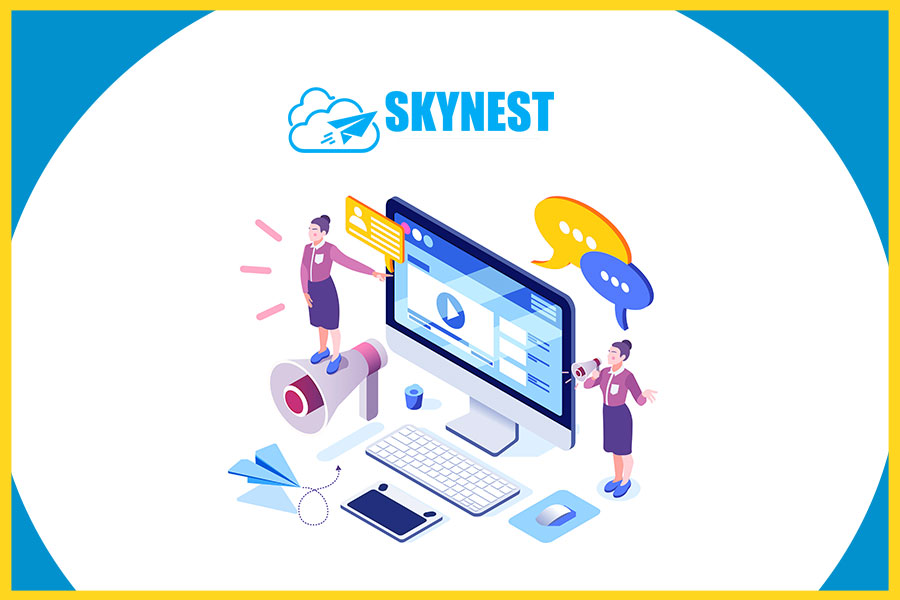There are two main establishments in affiliate marketing: advertisers and publishers. In this article, we will discuss the differences and relationship status between these two groups of.
What is an advertiser?
An advertiser is an entity that pays for advertising space on websites or other platforms. Advertisers usually work with publishers to promote their products or services to the audience. They also purchase ads to promote their brands and generate sales. Examples of common advertisers include large corporations. Advertisers are businesses that pay for advertising space on websites and other platforms. They typically partner with publishers to promote their products and services to potential customers. Content creators are organizations that create content that advertises the products and services of other businesses.
What is a publisher?
A publisher is a person or entity that creates media content and distributes it via print, TV, radio, online, or any other media format. Publishers produce many different types of content including magazines, newspapers, books, videos, music, etc. A content creator creates quality content that promotes the advertiser’s product or service. The content may be in the form of articles, blogs, videos, audios, info-graphics, etc. The content of the ad must be engaging and provide value to the readers
Multiple revenue channels:
Publishers can monetize their traffic through multiple revenue channels. They can sell ads on their website, or they can use a third party ad network to display ads on other websites. Publishers also have the ability to sell sponsored content or sponsored posts in exchange for an affiliation with brands that wants to be associated with them while they’re online. This is a great way for publishers who don’t have strong brand recognition or marketing budgets to get some extra money flowing into their business models
High level of digital engagement:
In a digital world, advertisers and publishers are in a constant battle for attention. While the former is trying to get its product or brand recognized, the latter is also vying for it. One way of increasing engagement with your content is through affiliate marketing. Affiliate marketing is when you promote other companies’ products and services through your own website or blog. The more people who visit the site because they saw an ad from you, then this means that there’s more traffic coming from those ads. Firstly, which means more revenue for both parties involved, secondly, which could mean higher quality traffic than before which would lead them directly back into their businesses without having had any interaction whatsoever with them before This means that affiliate marketing is a powerful tool for advertisers and publishers, as well as an effective way to increase sales and brand awareness. Affiliate marketing also has long-term benefits: you can earn money from your website until you stop promoting affiliate offers, which could be years down the road.
Affiliate marketing is a powerful tool for advertisers. It enables you to set up your own affiliate program and sell other people’s products, rather than just selling yours. An affiliate program can be set up on any website that has an eCommerce. You then allow affiliates to promote your product in exchange for compensation. This means you get paid every time someone makes a purchase from the merchant who signed up with your affiliate links.
Understand the concept:
Affiliate marketing is a win-win relationship between an advertiser and an affiliate. In this case, advertisers buy ads on websites or in magazines that have links to their site so that if someone clicks on the link and buys something, they get paid by the advertiser. This is similar to what happens with traditional advertising: A company sells its product directly through TV, radio and print ads, they also use affiliates who may be working for them or independently in which case they would receive a commission. However in this case there’s no need for any kind of direct contact between buyer or sellers since both parties are connected through a third party the affiliate program itself.
Affiliate marketing is a long-term relationship that benefits everyone involved:
Advertisers have access to a powerful tool for reaching their audience and building brand awareness, while publishers can focus on what they do best: the content that readers love. Affiliates receive increased earnings from each sale, which makes them more attractive as partners for advertisers. And customers benefit from having more options for where their shopping dollars go and who gets paid directly by them! You can’t just sign up for one month and expect to make money from that alone. It takes time, effort, and dedication to build an affiliate network that will bring in consistent revenue for years to come. You need to invest in people who are just as committed as you are if you want results from your campaign and this means paying them well.
Affiliate marketing is a win-win relationship. Both parties benefit from the partnership and work together to achieve the same goal thus generating revenue. It’s important to note that affiliate marketing can be considered long-term and will last for several years or even decades, depending on how much effort you put into it. This is because affiliate programs are built on trust between both sides of this equation, if an advertiser believes in your company’s products or services enough to recommend them to their customers, then you’ll have more success with your campaigns also.
Affiliate marketing works for every stakeholder of the partnership. Affiliate marketing is a form of promotion that allows you to earn money by promoting the products and services of a third party. The affiliate partner pays you when they make sales off your recommendations, with no cost being passed along to you. This can be done through links on your website, social media posts about their product or service via sponsored ads, or even banner ads on other websites that are relevant to what you’re selling. Affiliates also have access to special pricing programs sponsored by advertisers so they can increase their own profits while still providing value for their customers. These deals aren’t exclusive though, they’re available across all platforms where affiliates choose whether or not they want them.
Conclusion
Affiliate marketing is a new form for advertising products and services with the help of internet. The idea behind affiliate marketing is to get more traffic to a website, which can be referred as consumer. There are many ways in which affiliate marketers take advantage of affiliate marketing. First, they may encourage users to click on their links. Second, they may pay commissions every time they refer someone who registers through their link to their site or purchase something from them. Thirdly, they may assign the commission directly to their merchant accounts where they sell the purchases made through their referral links and then send them back in return after deducting billing fees and taxes (B2C). Fourthly, they can assign commission to a merchant account without sending any payment via credit card details or bank transfer and thus get paid by direct deposit (B2B). Third party review sites sometimes also use affiliate marketing as a method of monetization by providing advertisers targeting options on their websites that help advertisers in creating ads with relevant keywords etc. Many companies have already adopted this model instead of traditional advertising methods like television and print media. In addition there are many users who do not yet make use of this method for various reasons such as not knowing how these methods work or being afraid that it might not be effective. However further research indicates that these fears are unfounded because other companies have successfully used this approach with great results.




